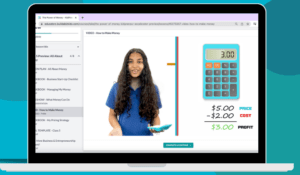The drastic divide between those who have access to the internet and those who do not has been gradually increasing alongside technological evolution, and as a result of the Covid-19 pandemic the digital divide has become indisputable. Keeping people connected virtually has never been more necessary. Among technology’s many uses, today it is needed to enable remote working, continuing K-12 schooling and higher education, and even to monitor physical and mental illnesses. In response to the issues related to the digital divide, which are abundant, the concept of providing free widespread internet access for an entire country has been in discussion.
Free widespread internet access must have there three characteristics for it to be effective:
- High speed: Internet speeds are typically defined in megabits per second (Mbps) for downloading and uploading data. High speed internet in 2020 can be up to 2,000 Mbps for downloads and 1,000 Mbps for uploads. However, for perspective, 25-50 Mbps is still considered high speed and more than adequate if you want to stream a movie, work from home, use home security devices, and much more.
- Free: One of the main goals of free widespread internet access is to provide connectivity for those who cannot afford it. Not offering high-speed internet for free defeats the overall mission to reduce and/or eliminate the digital divide.
- Accessible to all: The high-speed internet must be accessible in all or almost all premises. This includes households, schools, businesses, small towns and rural areas. Everywhere.
If a country, city, or region is able to check off all three of these criteria – high-speed internet without charge and accessible to all – it can be said that they have achieved the goal of free widespread internet access in all its glory.
Ireland’s Current Situation
For at least a decade, the feasibility of providing free widespread internet access for an entire country has been under consideration. In addition to narrowing the digital divide, free widespread internet access would enhance connectivity and productivity, promote economic development and tourism, and increase opportunities and intergenerational dialogue.
In recent years, Ireland has proven to be a leader of the movement towards the establishment of free widespread internet access. They have stepped up to the challenge and are currently working towards the accomplishment of this goal through the country’s National Broadband Plan.
Ireland’s National Broadband Plan
The National Broadband Plan (NBP) is an initiative led by the Government of Ireland to deliver high speed broadband services to all premises in the country. The motivation behind the NBP is to support and stimulate commercial investment. The project is being funded in part by commercial enterprises, while the remaining areas in which private companies do not plan to invest will be funded by the state.
Since the launch of the NBP, the commercial telecommunications sector has raised and invested 2.75 billion euros. These funds will be allocated to a variety of tasks associated with the establishment of Ireland’s free widespread internet access. The NBP involves the installation of 140,000km of fibre cable, 1.5 million poles from networks, and 15,000km of underground duct networks.
The NBP is the largest infrastructure project in rural Ireland since rural electrification. The Irish Government aims to “ensure no-one in Ireland is left behind.” At the start of the project, in 2012, only 30% of premises in Ireland had access to high speed internet. By the end of the project, in 2025, this will increase to 95% of premises. A total of 544,000 premises, including 700 primary schools, will be connected to Ireland’s free high-speed internet, benefitting more than 1 million people nationwide.
Ireland as an Example for the World
Around the world, as technology develops at an increasingly rapid pace, high speed internet access has become a human right. Stakeholders such as municipal and national governments, internet providers, and Wi-Fi installation companies must step up to the challenge of providing free widespread internet access. Ireland is leading the way with their NBP and should be seen as an example for other countries to follow suit.
Author: Theresa Lukjaniec





